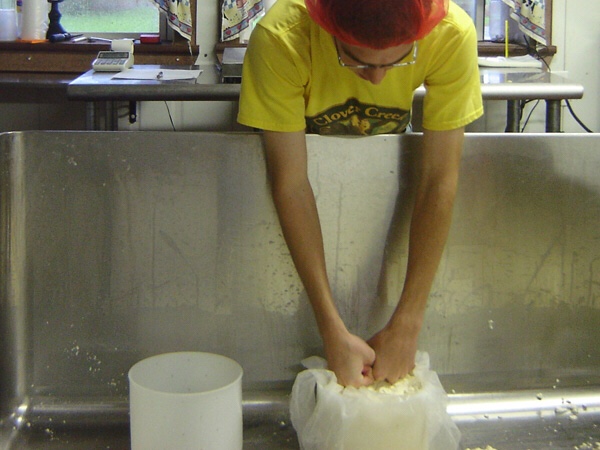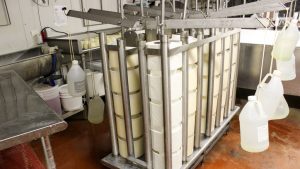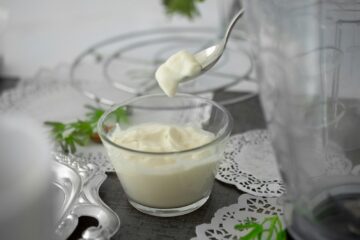Rennet, curds, whey, cheddaring. As you may have noticed throughout this series, cheese making has its own special vocabulary. Before I can explain the next steps in cheesemaking there are two more words that I need to define. Hoops are the containers we use to mold the curds into a solid unit of cheese. Followers are the lids that we place on top of the curds. The followers slide inside the hoops so that we can set the next hoop on top in the cheese press.
Our hoops are round cylinders eight inches in diameter. They have small drain holes evenly spaced across the sides and bottom to let the whey drain out. Hoops come in many different sizes. Some cheesemakers use very large hoops to make enormous wheels of cheese.

To begin filling a hoop, we place cheesecloth in each hoop and then pile the curds inside (Read about how we cheddared and milled the curds in our previous post). The cheesecloth makes sure that none of the curds squeeze through the drain holes. Once the hoop is full to the top, we weigh each wheel to ensure that they all will be close to the same weight.

After weighing, we put each hoop in our cheese press. We can fit 60 hoops in our cheese press, six columns of five hoops each. As you can see in the picture, our press uses metal arms as levers with gallon water jugs as weights. The final number of jugs we use depends on the variety of cheese that we are making. At the start of pressing, we only put one jug.

Once the hoops have been pressing for a half-hour, we take them back out. We take the wheel and cheesecloth out and then put it all back together again. Essentially, we are turning each wheel over inside the hoops. This is redressing, which allows the wheels to press more evenly and let more of the whey out. We do this every hour for the first three hours and then for every two hours. Adding a new jug each time, we redress until there are four gallons of weight on each arm.
We leave our cheddar in the press overnight. We redress the wheels again in the morning. Once the wheels have been in the press for 24 hours, we take them out of the press. We remove the cheesecloths and then we weigh each wheel. This data goes into our record, for us to keep track of the yield. The yield of a batch of cheese is the pounds of cheese divided by the pound of milk used to make it. A standard yield for making cheese is one pound of cheese for every ten pounds of milk. We usually get around 11-15% yield depending on the time of year and the type of cheese that we are making. For our cheddar, we usually get a yield of around 9-11%.
Once the wheels are weighed, we put them in our cooler to age. I’ll explain more about our aging process in the next post.
NEXT: Affinage and Aging



0 Comments